Abstract
This is the second of two papers on an analytical and experimental study of the flow of erythrocyte membrane. In the experiments discussed here, preswollen human erythrocytes are sphered by aspirating a portion of the cell membrane into a small micropipette; and long, thin, membrane filaments or tethers are steadily withdrawn from the cell at a point diametrically opposite to the point of aspiration. The aspirated portion of the membrane furnishes a reservoir of material that replaces the membrane as it flows as a liquid from the nearly spherical cell body to the cylindrical tether. The application of the principle of conservation of mass permits the tether radius Rt to be measured with the light microscope as the tether is formed and extended at a constant rate. The tether behaves as an elastic solid such that the tether radius decreases as the force or axial tension acting on the tether is increased. For the range of values for Rt is these experiments (100 A less than or equal to Rt less than or equal to 200 A), the slope of the tether-force, tether-radius line is -1.32 dyn/cm. The surface viscosity of the membrane as it flows from cell body to tether is 3 x 10(-3) dyn.s/cm. This viscosity is essentially constant for characteristic rates of deformation between 10 and 200 s-1.
Full text
PDF
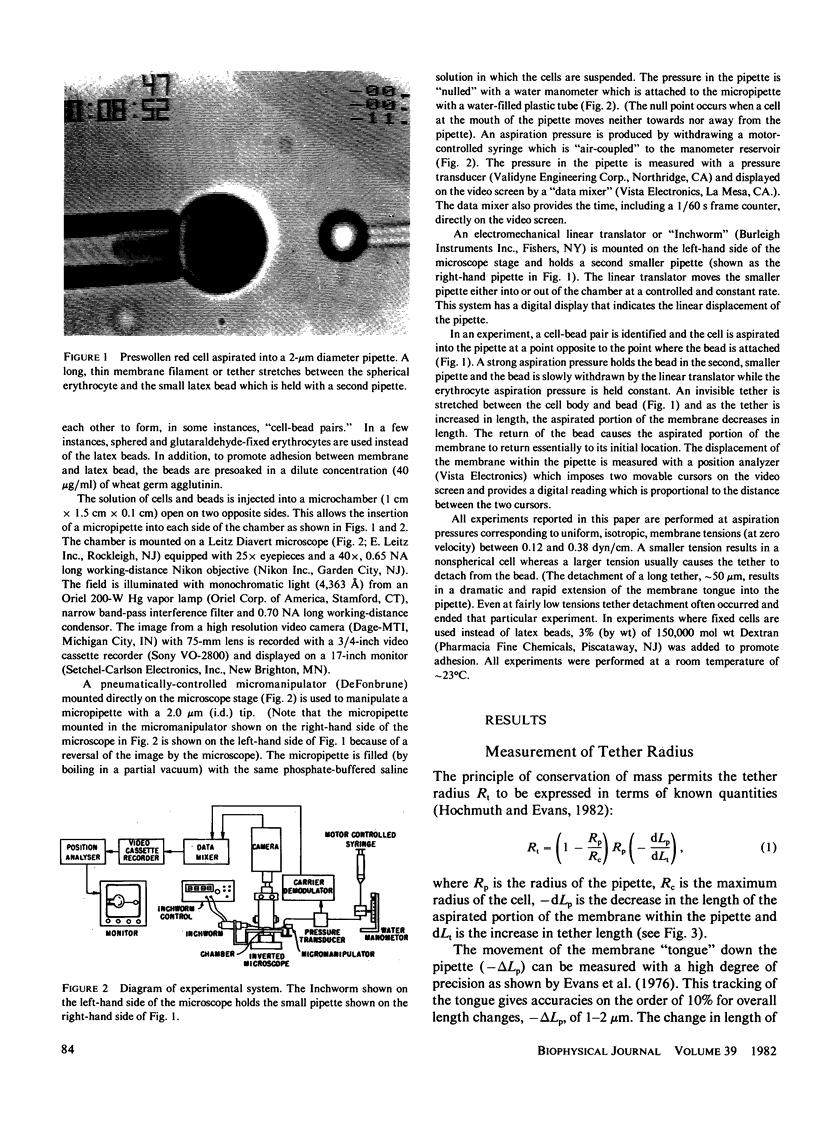
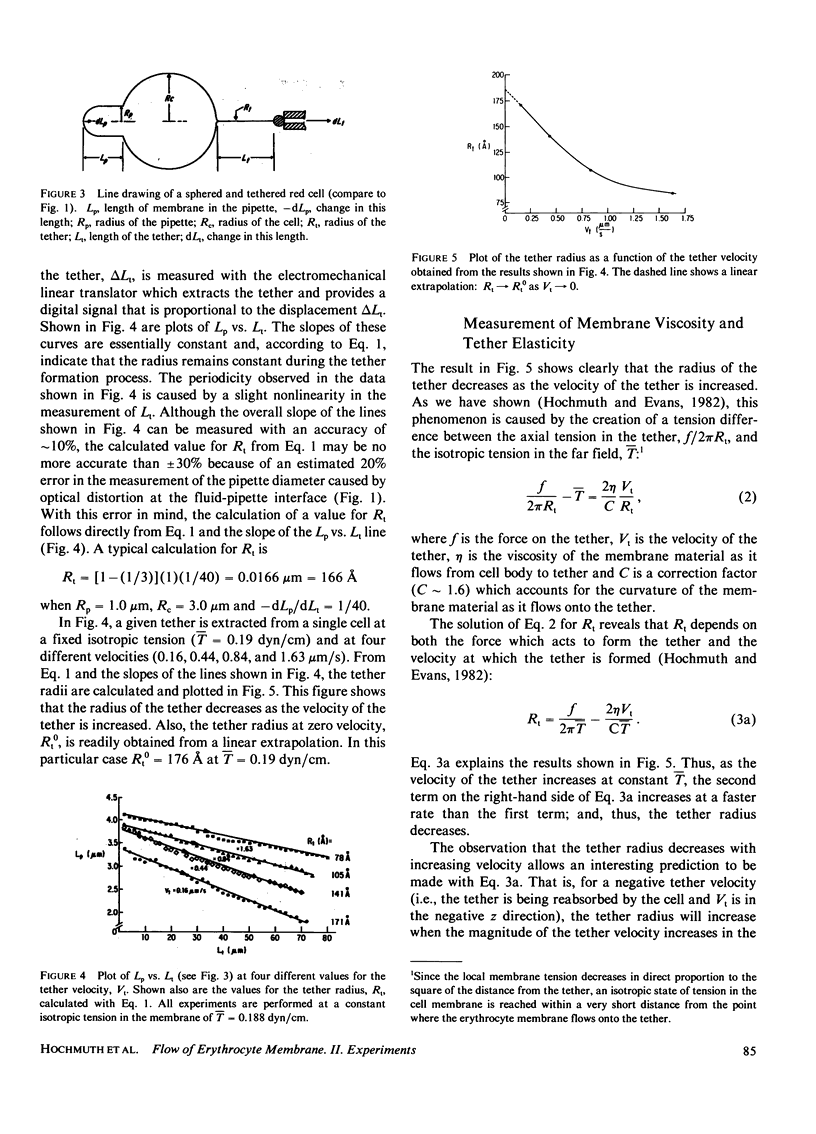
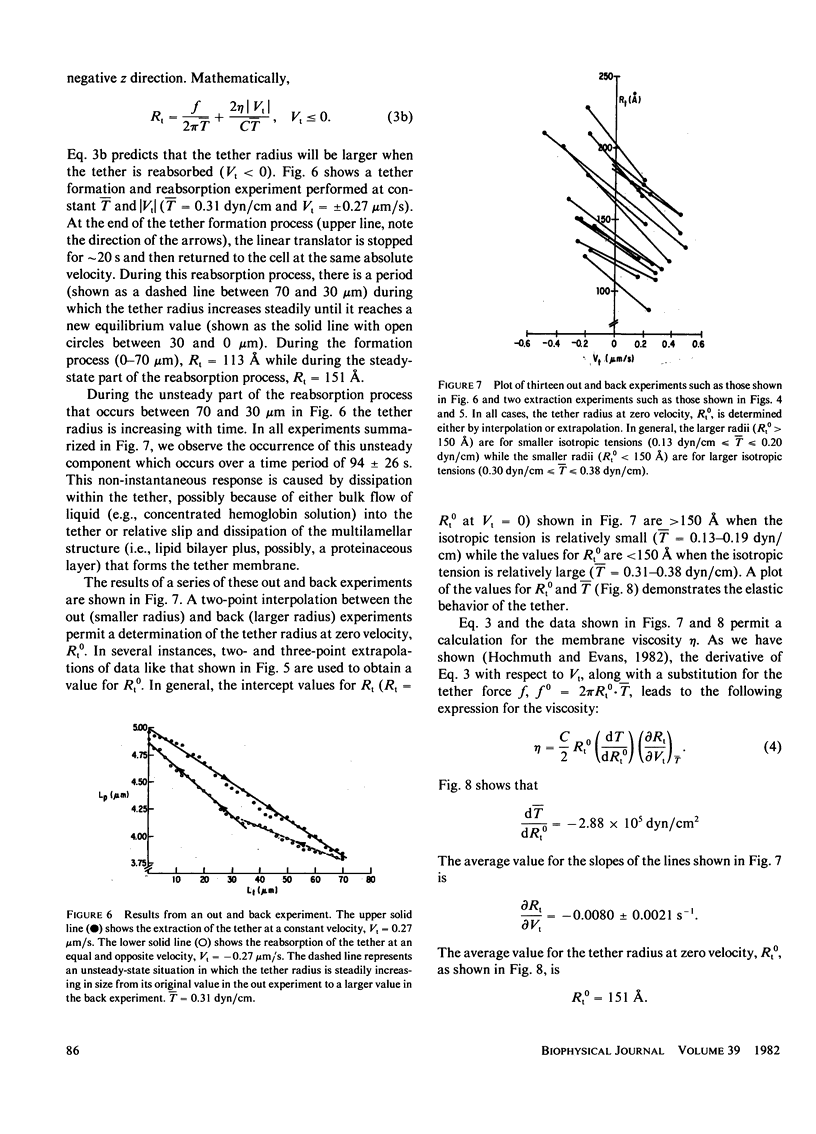
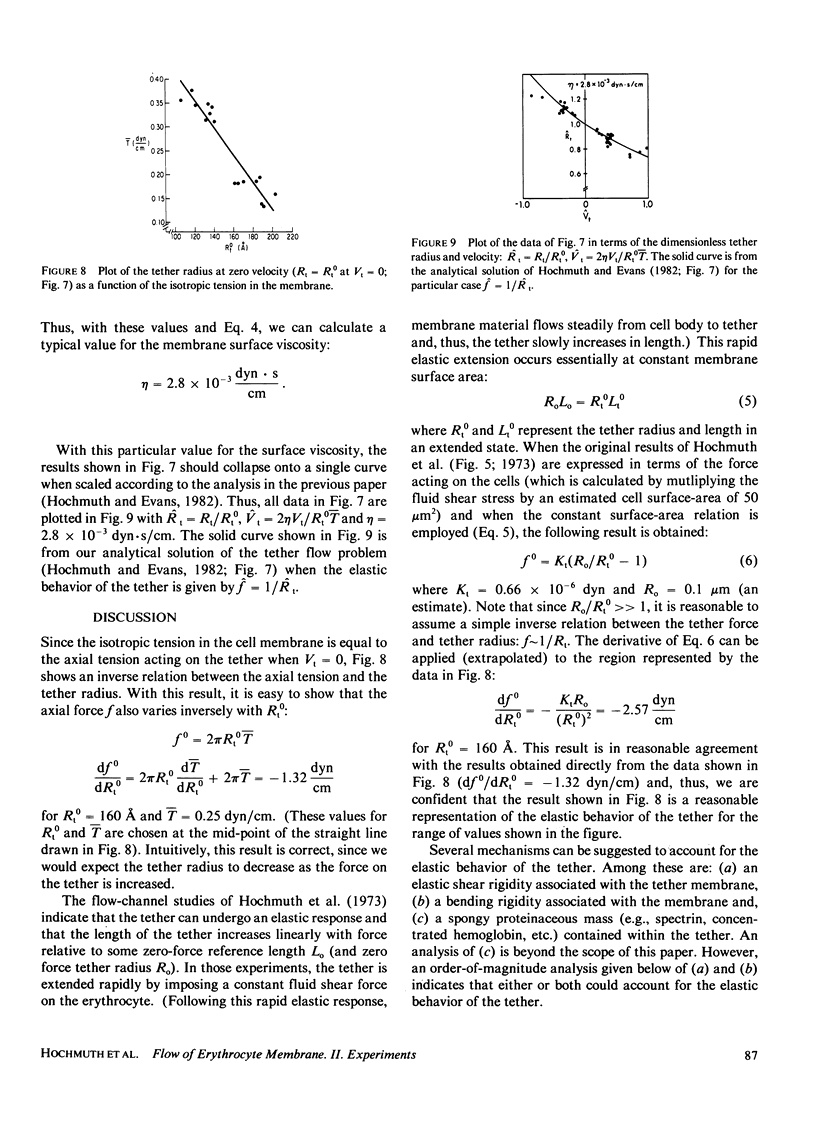
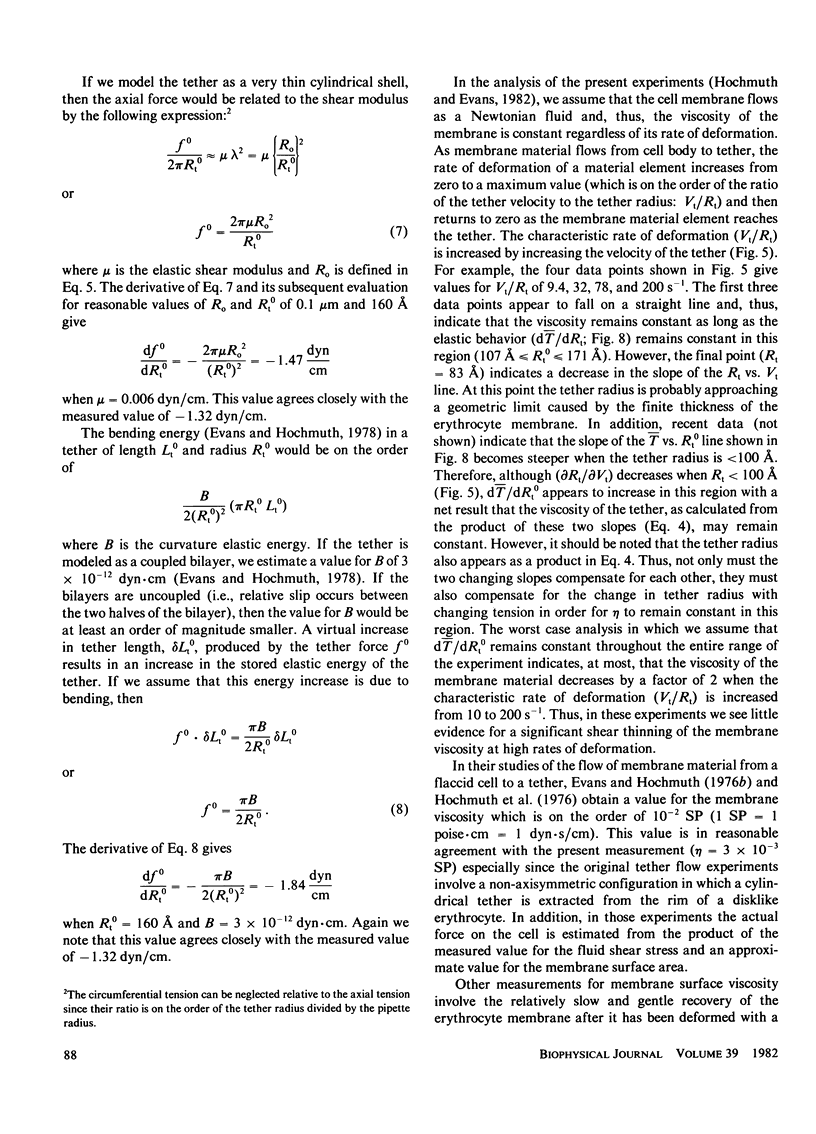
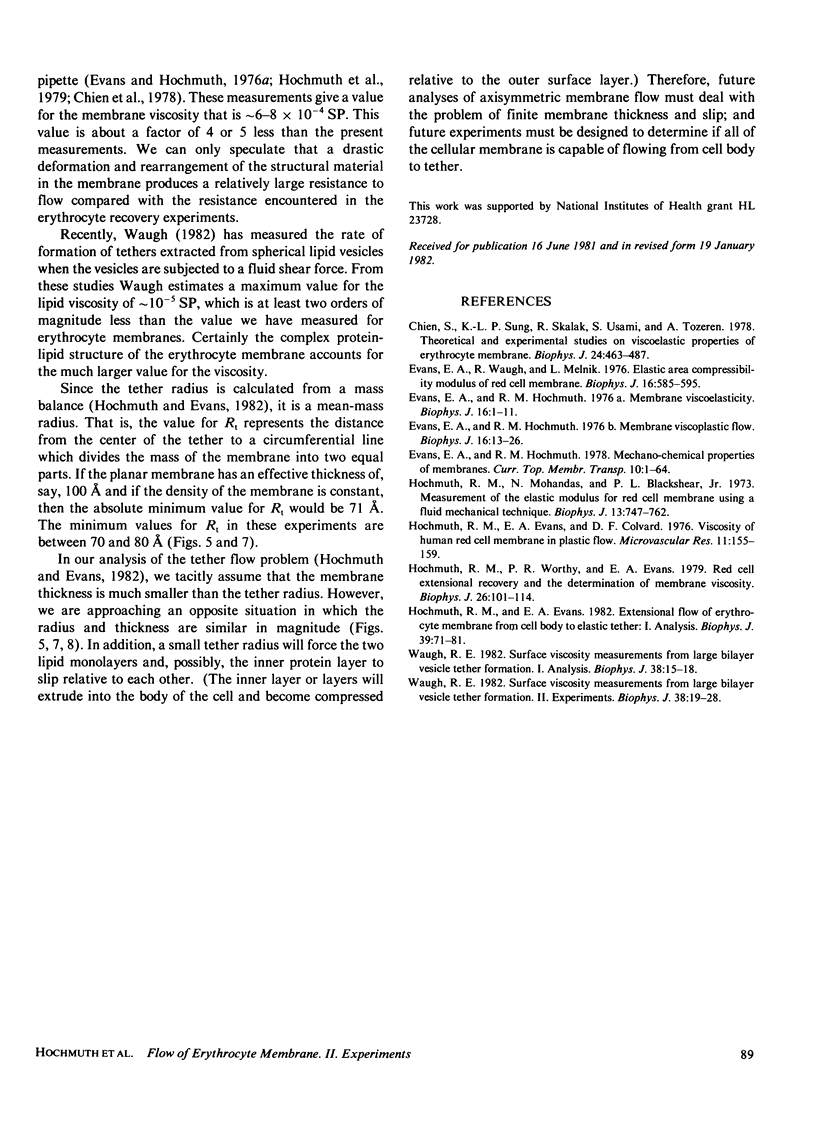
Images in this article
Selected References
These references are in PubMed. This may not be the complete list of references from this article.
- Chien S., Sung K. L., Skalak R., Usami S., Tözeren A. Theoretical and experimental studies on viscoelastic properties of erythrocyte membrane. Biophys J. 1978 Nov;24(2):463–487. doi: 10.1016/S0006-3495(78)85395-8. [DOI] [PMC free article] [PubMed] [Google Scholar]
- Evans E. A., Hochmuth R. M. Membrane viscoelasticity. Biophys J. 1976 Jan;16(1):1–11. doi: 10.1016/S0006-3495(76)85658-5. [DOI] [PMC free article] [PubMed] [Google Scholar]
- Evans E. A., Hochmuth R. M. Membrane viscoplastic flow. Biophys J. 1976 Jan;16(1):13–26. doi: 10.1016/S0006-3495(76)85659-7. [DOI] [PMC free article] [PubMed] [Google Scholar]
- Evans E. A., Waugh R., Melnik L. Elastic area compressibility modulus of red cell membrane. Biophys J. 1976 Jun;16(6):585–595. doi: 10.1016/S0006-3495(76)85713-X. [DOI] [PMC free article] [PubMed] [Google Scholar]
- Hochmuth R. M., Evans E. A., Colvard D. F. Viscosity of human red cell membrane in plastic flow. Microvasc Res. 1976 Mar;11(2):155–159. doi: 10.1016/0026-2862(76)90047-9. [DOI] [PubMed] [Google Scholar]
- Hochmuth R. M., Evans E. A. Extensional flow of erythrocyte membrane from cell body to elastic tether. I. Analysis. Biophys J. 1982 Jul;39(1):71–81. doi: 10.1016/S0006-3495(82)84492-5. [DOI] [PMC free article] [PubMed] [Google Scholar]
- Hochmuth R. M., Mohandas N., Blackshear P. L., Jr Measurement of the elastic modulus for red cell membrane using a fluid mechanical technique. Biophys J. 1973 Aug;13(8):747–762. doi: 10.1016/S0006-3495(73)86021-7. [DOI] [PMC free article] [PubMed] [Google Scholar]
- Hochmuth R. M., Worthy P. R., Evans E. A. Red cell extensional recovery and the determination of membrane viscosity. Biophys J. 1979 Apr;26(1):101–114. doi: 10.1016/S0006-3495(79)85238-8. [DOI] [PMC free article] [PubMed] [Google Scholar]



